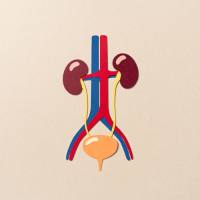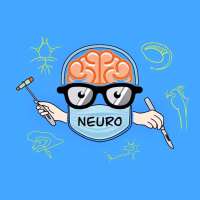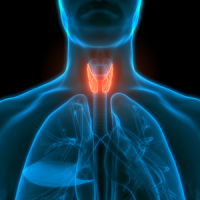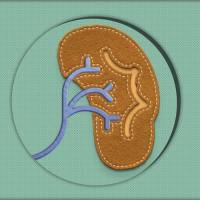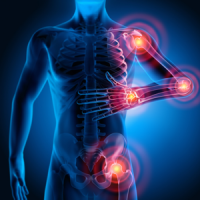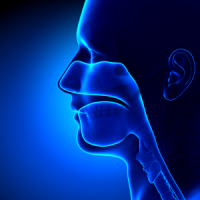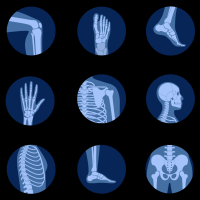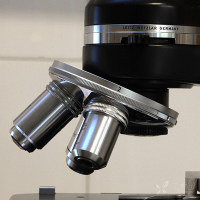急性缺血性卒中的CT灌注自动成像,使用中的经验和教训。
Automated CT perfusion imaging for acute ischemic stroke:Pearls and pitfalls for real-world use.
急性缺血性卒中的CT灌注自动成像,使用中的经验和教训。
Achala Vagal, MD, MS, Max Wintermark, MD, Kambiz Nael, MD, Andrew Bivard, PhD, Mark Parsons, MD, PhD,
Aaron W. Grossman, MD, PhD, and Pooja Khatri, MD, MSc
Neurology®2019;93:1-11. doi:10.1212/WNL.0000000000008481
Table 1 Ten pitfalls and pearls of automated CPT

Figure 1 Examples of automated postprocessed CTP maps

Estimation of the ischemic core and penumbra is shown using a few commercially available software packages including (A) RAPID, (B) Viz.ai, (C) Olea, and (D)MIStar. CBF = cerebral blood flow; CTP = CT perfusion; Tmax = time to maximum.
Understanding the basics of CTP acquisition and processing 了解CTP采集和处理的基础知识
CTP consists of a temporal sequence of images obtained during the wash-in and the wash-out of an IV bolus of iodinated contrast agent. Following CTP data acquisition, source images are transferred to a postprocessing workstation where dedicated software allows creation of parametric maps for clinical interpretation. For each pixel on a CTP map, hemodynamic parameters are calculated based on the time-density curves created from the wash-in and the wash-out of contrast material in this pixel.8,9It is helpful to be familiar with the multiple perfusion maps, which results from each hemodynamic parameter that is generated in a CTP study:
1. Time to maximum (Tmax or delay time) represents the time from the start of the scan until the maximum intensity of contrast bolus arrives at each voxel. It is an absolute value expressed in seconds.
2. Mean transit time (MTT) designates the average time required for a contrast bolus to traverse the voxel and is measured in seconds. MTT is inversely proportional to cerebral perfusion pressure and typically lasts about 4–5 seconds in normal tissue.
3. CBF refers to the volume of blood flowing in a unit of brain mass during a unit of time, which is measured in milliliters/100 g/min (mL/100 g/min). Normal gray matter has a higher CBF (around 80 mL/100 g/min) than that of normal white matter (around 20 mL/100 g/min).
4. CBV refers to cerebral blood volume, which is equivalent to the fraction of a voxel that contains blood vessels, expressed in the unit mL/100 g. Of note, the parameters CBF, MTT, and CBV are mathematically related by the equation: CBF = CBV/MTT, which is also known as the central volume principle.Thus, measurement of any of these parameters is sufficient to derive the third parameter.
CTP由时间序列图像组成,在静脉注射碘化造影剂wash-in and the wash-out过程中获得。在CTP数据采集之后,源图像被传输到后处理工作站,通过专用软件创建参数图用于临床解释。对于CTP图上的每个像素,根据该像素中对比剂的wash-in and the wash-out时间-密度曲线来计算血流动力学参数[8.9]。熟悉CTP研究中生成的每个血流动力学参数所产生的多重灌注图是很有帮助的:
1. Time to maximum (Tmax or delay time)
达峰时间(Tmax或延迟时间)表示从扫描开始到造影剂到达每个体素最大密度值的时间。它是以秒的绝对值为单位。
2. Mean transit time (MTT)
表示造影剂穿过体素所需的平均时间,以秒为单位。MTT与脑灌注压成反比,在正常组织中通常持续约4-5秒。
3. CBF
脑血流量CBF是指在一段时间内,单位大脑质量内的血流量,单位为milliliters/100 g/min (mL/100 g/min). 正常灰质的CBF(约80mL/100g/min)高于正常白质(约20mL/100g/min)[10]。
4. CBV
指的是脑血容量,相当于体素内包含血液容量,单位为ml/100g。值得注意的是,这些参数CBF、MTT和CBV在数学上由以下公式关联:
CBF = CBV/MTT, 这也被称为中心体积原理[11]. 因此,测量这些参数中的任意2个就足以得出第三个参数。
The time-density curves, and specifically the area under the curve, of each voxel are influenced by 2 major factors: (1) arterial flow (i.e., the arterial input function) and (2) the tissue itself (i.e., its inherent hemodynamic properties). Numerous factors can alter the temporal profile of arterial flow of contrast agent delivery to tissue, resulting in delay, or dispersion, of the contrast bolus; examples include impaired cardiac output, carotid artery stenosis, and injection-related factors such as the injection rate and the saline chase.To minimize the effect of the temporal profile of arterial flow on time-density curves, a mathematical operation called deconvolution is performed to show the true hemodynamic properties of the tissue being depicted.Deconvolution allows calculation of MTT, time to maximum (Tmax), and CBF. There are different deconvolution methods: singular value decomposition (SVD),delay- and dispersion-corrected singular value deconvolution (dd-SVD),and Bayesian methodologies.18Importantly, the outputs from dd-SVD or Bayesian processing yield delay time (DT) instead of Tmax used with SVD deconvolution. Although a detailed comparison of the methods is beyond the scope of this article, the inherent variability in the measurement of the core and penumbra based on the deconvolution algorithm should be noted.
每个体素的时间-密度曲线(特别是曲线下面积)受两个主要因素影响:1. 动脉血流(ie. 动脉输入功能);2. 组织本身(ie. 其固有的血液动力学特性)。许多因素可以改变造影剂传递到组织时的动脉血流分布,导致造影剂的延迟或离散;例如:包括心输出量异常,颈动脉狭窄,以及注射相关因素,如注射速度和盐水注入。为了最大限度地减少动脉血流的时间分布对时间-密度曲线的影响,需要进行一种称为去卷积的数学运算,以显示所描绘的组织的真实血流动力学特性。去卷积可以计算MTT、达峰时间(Tmax)和CBF。有不同的去卷积算法:singular value decomposition (SVD) delay- anddispersion-corrected singular value deconvolution (dd-SVD),17and Bayesian methodologies.重要的是,dd-SVD or Bayesian处理后产生的延迟时间(DT)可以代替SVD去卷积中的Tmax。虽然这两种方法的详细比较超出了本文的范围,基于去卷积算法的核心和半暗带测量的内在变化需要被注意。

Pitfalls of perfusion imaging 灌注成像的误区
下面,我们将重点介绍常见的技术和诊断教训,总结的经验以及应对挑战。
Technical pitfalls 技术教训
优化灌注研究技术获取的重要性怎么强调都不为过。任何灌注软件都很难使用后处理算法来充分纠正固有的不良采集:“垃圾输入,垃圾输出”。 从技术角度评估图像质量指标应该是CTP解释的第一步,应该在评估彩色和定量灌注图之前进行。

Patient motion
由于电影采集(即动态连续旋转),即使是轻微的运动也会降低血流灌注研究的质量。大多数自动化软件包常规地提供患者的运动轮廓,这些轮廓提供旋转和平移运动的图形估计(figure 2). 我们建议在自动报告中常规检查患者的运动情况,在运动严重的情况下,可能要通过适当的头部固定(例如,胶带)重复灌注研究。同样重要的是,扫描病人时,头部要处于对称的位置,而不能倾斜头部。CTP软件使用对侧作为检测核心的参考,大脑半球之间不对称可能导致错误的结果。此外,随着角度的形成或头部倾斜,大脑轴位切片与主要动脉供应的距离将不相等,有可能导致假的半影区。


Contrast bolus 对比剂
造影剂的特性,特别是造影剂给药的时间,确保了脑组织中碘化造影剂在大脑中的充足饱和度。扫描持续时间为70秒,包括对比剂的wash-in and wash-out,通常足以准确评估缺血性病变体积28。然而,重要的是,在大血管闭塞的患者中,造影剂的到达可能会延迟,CTP扫描可能会比适当的时间更早结束(即截断)。理想的时间-密度曲线(figure 2)不应该有任何早期截断或不完整的wash-out,也不应该有足够的图像采集基线周期(还没有开始形成对比)。此外,不恰当的静脉注射途径,如远端/手静脉或小静脉输液孔,也可能导致造影剂轮廓不足(figure 3)。建议对比剂注射速率至少为4mL/min才能获得正确的CTP。影响造影剂特性的非技术因素包括低心输出量、心房颤动、心律失常、主动脉夹层、严重的近端颈内动脉狭窄和颈内动脉夹层;在这些并存的情况下,解释应该更具试探性。
Figure 2 Checking technical quality of a CTP study

Several steps required to confirm quality assurance and technical adequacy of a CTP study are generated in an automated report. (A) Normal arterial input function and venous outflow function curves with an adequate baseline, rapid upslope, and without truncation. (B) Accurate automated selection of the AIF (red dot) and VOF (blue dot). (C) No motion in x-, y-, and z-axis with near-straight lines. AIF = arterial input function; CTP = CT perfusion.
在自动报告中生成确认CTP研究的质量保证和技术充分性所需的几个步骤。(A)正常的动脉输入功能和静脉流出功能曲线,有足够的基线,快速上升,没有截断。(B)精确自动选择AIF(红点)和VOF(蓝点)。(C) 没有运动在x轴、y轴和z轴上接近直线。AIF=动脉输入功能;CTP=CT灌注。
Figure 3 Technical pitfalls of CTP

Several steps required to confirm quality assurance and technical adequacy of a CTP study are generated in an automated report. (A) Normal arterial input function and venous outflow function curves with an adequate baseline, rapid upslope, and without truncation. (B) Accurate automated selection of the AIF(red dot) and VOF (blue dot). (C) No motion in x-, y-, and z-axis with near-straight lines. AIF = arterial input function; CTP = CT perfusion.
一些可能影响自动CTP后处理的潜在技术陷阱。包括(A)运动,(B)以箭头标记的颅底和后颅窝附近血流灌注异常的错误计算,以及(C)动态曲线的截断。AIF=动脉输入功能;CTP=CT灌注。










